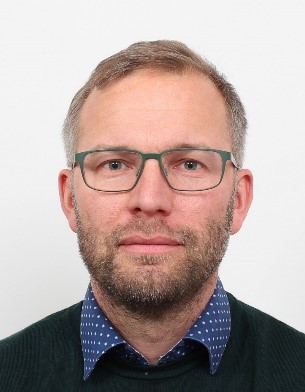Field Phenotyping (Session)

Speakers:
1) Dr. Shawn C. Kefauver: Proximal RGB imaging for field phenotyping (Professor Lector, University of Barcelona, Faculty of Biology )
2) Dr. Onno Muller: Proximal sensing of photosynthesis by plant canopy fluorescence for phenotyping (IBG-2, Forschungszentrum Jülich)
Date: November 27th 2020 / Time: 14:00 (Berlin Time) / 7.00 AM (CDT)
Watch the recorded webinar online
Abstracts:
1) In this brief webinar we will review some of the state-of-the-art on the field phenotyping use of color digital cameras, which capture Red, Green and Blue light covering the visible spectrum with broad spectral bands but at high spatial resolution and with really quite accurate color calibration. I will introduce various RGB vegetation indexes that use the spectral concept for the estimation of biomass and canopy chlorophyll, the Normalized Green Red Difference Index and the Triangular Greenness Index, as well as others that are in popular use based on this same concept. We will also cover a number of spectral indexes based on alternate color space transforms such as Hue Saturation Intensity (HSI), CIE-Lab and CIE-Luv and their practical calculations. Following, I will demonstrate the practical aspects of the calculation of these RGB vegetation indexes using the free software FIJI (FIJI is Just ImageJ) using both the interactive GUI (graphical user interface) of the software and also software plugin packages that include the calculation of these RGB vegetation indexes, whether captured using a standard digital camera and processed locally with the CerealScanner (https://gitlab.com/sckefauver/cerealscanner) or even captured by mobile phone using the Open Data Kit (https://opendatakit.org/) and processed remotely by PC/server application (https://gitlab.com/sckefauver/cerealfusion).
2) In this webinar we will focus on non-invasive methods to quantify plant canopy chlorophyll fluorescence in the field with a specific focus on the light induced fluorescence transient (LIFT) method. The derived photosynthesis traits are evaluated for their use in high throughput field phenotyping. Therefore we will first explain the LIFT and alternative methods for deriving plant chlorophyll fluorescence in the field. We will show several examples from high (to not so high) throughput phenotyping experiments (e.g. drought, elevated CO2) in combination with different positioning platforms. This webinar will provide you with a basic understanding of plant chlorophyll fluorescence and, independent of the plant trait, considerations for performing high throughput field phenotyping.
Speaker(s) Bio(s):
1)

Prof. Kefauver’s current research and teaching interests are plant ecophysiology, climate change, and agriculture, including thermal remote sensing, imaging spectroscopy and GIS applications for multi-scale scientific research on these topics. He is currently a researcher and professor of plant physiology focused on image analysis and the use of advanced technologies for plant ecophysiology and agroforestry, including piloting and engineering UAVs for image data acquisition and phenotyping specific software development at the University of Barcelona, Spain. Besides essential basic research in plant ecophysiology, Dr. Kefauver’s research aims to drive precision agroforestry and high throughput plant phenotyping towards improving environmental sustainability and global food security through pushing the limits in the state-of-the-art science as well as advancing the efficacy of low-cost alternatives and open-source software for providing real improvements in developing countries. Prof. Kefauver also serves on the editorial board of three scientific journals and actively supports diversity and equality in science as Co-Chair of the IEEE GRSS Inspire, Develop, Empower, and Advance (IDEA) Committee (http://www.grss-ieee.org/community/idea/). See SCOPUS or Google Scholar for his recent works or follow him at @doctorxkefauver.
2)

Throughout Onno's career he has wondered “how do they do it” from when he saw few evergreen plants keeping their leaves in harsh winter conditions to cassava plants providing a secure food source under unstable natural or human imposed environmental conditions. Therefore he aims to understand and quantify the plant response to diverse environmental conditions, mostly focusing on the photosynthesis performance and related traits. He worked in natural ecosystems, large scale forest warming experiment and growth chambers looking at small scale vein structure in leaves. Currently he concentrates more on agricultural crops and field phenotyping. He is in the lucky circumstances to do this together with a large group as deputy head of shoot dynamics in the institute of bio and geo sciences 2, Forschungszentrum Juelich in Germany where he is leading the field phenotyping efforts. In this position he build up an intensive field phenotyping infrastructure under elevated CO2 and enabled phenotyping experiments in diverse climate conditions world-wide.
